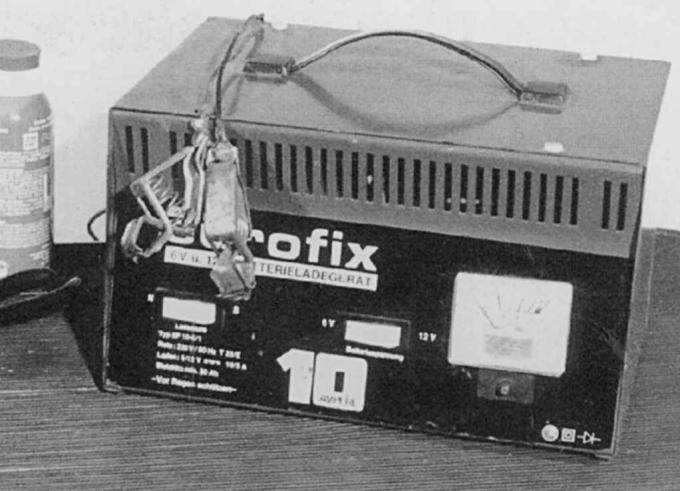SEQUENCE OF WORK

Pic. 15.7. Battery charger
Connect the positive lead of the charger to the positive terminal of the battery, the negative lead to the negative terminal (pic. 15.7).
Charging the battery must be started with a current that is approximately 10% of the nominal capacity of the battery (e.g. 4.0A in a 40Ah battery), which is automatically reduced during charging.
When charging, partial electrolytic decomposition of water occurs, producing oxygen on the positive plates and hydrogen on the negative plates, an explosive mixture that escapes through the vents in the plugs.
Make sure your work area is well ventilated. This is especially important when charging the battery with high currents.
WARNING
Sparks when connecting and disconnecting the charger can ignite the explosive mixture, so be sure to follow the safety rules.
Visitor comments